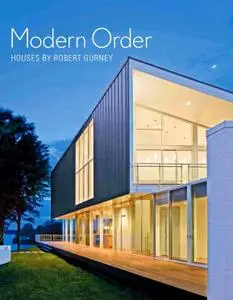Modern Order: Houses by Robert Gurney by Carolyn Horwitz, Vernon Mays
English | 2009 | ISBN: 0982319010 | 178 pages | PDF | 101 MB
English | 2009 | ISBN: 0982319010 | 178 pages | PDF | 101 MB
Washington, D.C.-area architect Robert M. Gurney, FAIA, designs ecologically aware modern homes using natural materials and varied construction methods. Modern Order: Houses by Robert Gurney features photography and drawings of 19 of Gurney’s homes, with an essay by architecture writer/editor Vernon Mays.
Editorial Review:
The cover of Modern Order: Houses by Robert Gurney shows a new, modern house that seems to float atop a lush green lawn. Its long, taut lines lead your eye to the body of water it overlooks, and its rigorous geometry lives up to the book's title. It's a beautiful cover that introduces an equally lovely book.
But the project featured on the cover fits only one of the residential project types at which Alexandria, Va.-based Robert M. Gurney, FAIA, excels. Gurney moves fluidly among renovations, additions, new houses, and interior remodels. His always-modern work is also notable for its consistent sensitivity to context, whether that context is a green field or a historic building or neighborhood.
Modern Order demonstrates this versatility. It presents full-color photography and drawings of 19 residences, including a new house in Potomac, Md., that draws subtle influences from Japanese architecture; a glass addition to an 18th-century farmhouse in Washington, Va. (winner of residential architect's 2003 project of the year); a Bethesda, Md., renovation completed over a span of 10 years; and many other new homes and remodels that demonstrate Gurney's skill and range. (As well as those of his wife, interior designer Thérèse Baron Gurney, who created many of the projects' interiors.)
An engaging introduction by design writer Vernon Mays provides insights into Gurney's design process and background. He posits that the architect's early experiences working on construction sites with his bricklayer father "helped [him] develop a sensitivity for the way materials feel, in addition to how they look—a tactility that is expressed in his buildings as compositions of textures." And Mays details Gurney's fascination with form and composition: "His houses are careful arrangements of shapes that give individuality and clarity to the main elements of the residential program."
The Washington, D.C., area contains a handful of world-class modern residential architects, and Gurney certainly ranks as one of them. This well-organized and visually pleasing book helps make that fact even more apparent.



